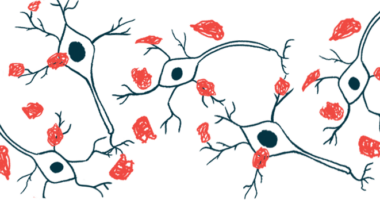Neurorehabilitation Seen to Ease Disease Symptoms, Protect Neurons
Mouse study supports exercise and cognitive training, but mostly in early disease

A therapeutic mix of exercise, cognitive stimulation and social activity — known as environmental enrichment — eased Parkinson’s disease symptoms and protected brain cells in a mouse model, though to a greater extent in early disease stages, a study reported.
Benefits were notably less potent in animals with more advanced disease progression.
“This study suggests that early-life exposure to [environmental enrichment] would bring more positive results in preventing the progression of behavioral symptoms and in protecting dopaminergic system functions than later-life [environmental enrichment] exposure,” the researchers wrote.
Early use of this therapeutic approach also increased levels of a brain protein called Reelin, which the researchers propose may be a useful target in treating Parkinson’s.
The study, “Reelin protects against pathological α-synuclein accumulation and dopaminergic neurodegeneration after environmental enrichment in Parkinson’s disease,” was published in Neurobiology of Disease.
Parkinson’s is characterized by the accumulation of toxic alpha-synuclein, protein clumps thought to help drive the death of dopaminergic (dopamine-producing) neurons, which leads to disease symptoms.
In mice, environmental enrichment (EE) involves exposing the animals to new toys, larger enclosures, and more social partners. This mouse enrichment works in ways comparable to people with Parkinson’s attending neurorehabilitation, since it “imitates the stimuli of the treatment courses … provided to the patients by encouraging voluntary exercise, giving cognitive stimulation, and increasing social interaction,” the scientists said.
Neurorehabilitation may be of benefit through actions on LAMP1, Reelin proteins
Researchers in Korea investigated the impact of EE in a mouse model of Parkinson’s caused by mutations in the gene that provides instructions for making the alpha-synuclein protein.
Mice were exposed to environmental enrichment for eight weeks, starting in the early or late stages of Parkinson’s-like disease — meaning, starting at ages 6 or 16 months, respectively. The mice then underwent a battery of behavioral and sensory tests.
At both disease stages, EE led to improvements in assessments of muscle strength, balance, and olfaction (the ability to smell, which is often impaired in Parkinson’s). In early stage mice, but not in their late-stage peers, environmental enrichment also led to improvements in assessments of cognition.
“These results indicate that EE prevents both motor and non-motor deficits in the early stage, but it does not ameliorate cognitive deficits in the late stage of [Parkinson’s disease],” the researchers wrote.
Evaluation of the mice’s brain tissue indicated EE reduced the toxic aggregation of alpha-synuclein and protected dopaminergic neurons from damage, though these effects were markedly more potent when EE was given in the early stages compared to the late stages.
These findings suggest “that, in the early stage of [Parkinson’s], EE can protect [dopaminergic] neurons … and may contribute to attenuating [reducing] aggregated protein formation and accumulation,” the researchers wrote.
Parkinson’s is commonly characterized by lower expression in the brain of a protein called LAMP1, which is involved in clearing toxic clumps of alpha-synuclein and other proteins. Further analyses showed that environmental enrichment increased LAMP1 expression, but again the effects were more potent in the early stages of disease.
“In late stage of [Parkinson’s], the exposure of EE neither protected dopaminergic neurons nor decreased the level of phosphorylated [alpha-synuclein],” or this protein in its toxic form, the researchers wrote.
Mice undergoing EE in early disease stages also showed greater expression of a protein called Reelin, important in early brain development and in regulating neural network plasticity — the ability of these networks to change with growth and to reorganize — within the matured brain, which is thought to affect cognition.
In experiments using cells in dishes, the researchers demonstrated that Reelin could activate LAMP1 to lower alpha-synuclein levels.
“With LAMP1 upregulated by the recombinant Reelin protein, total [alpha-synuclein] and aggregated [alpha-synuclein] accumulations were reduced, and dopamine neurons were protected against degeneration” in this cell model, the team wrote.
This cell dish study “provided clear evidence that Reelin is involved in [disease-associated alpha-synuclein] degradation and dopamine neuron protection by upregulating LAMP1,” the researchers added.
The Reelin protein, they also noted, “could be a novel therapeutic target to activate the [alpha-synuclein] degradation pathway.”







